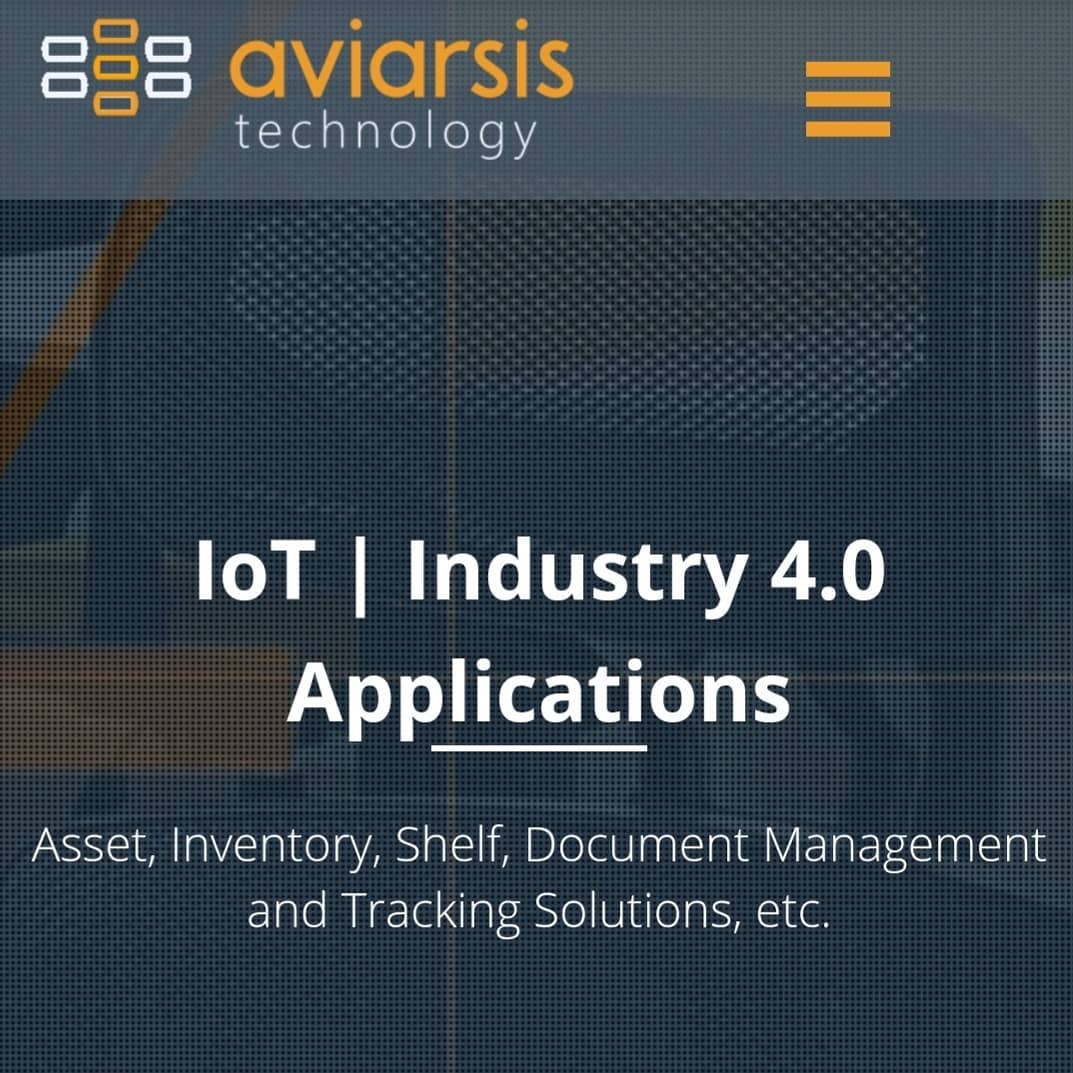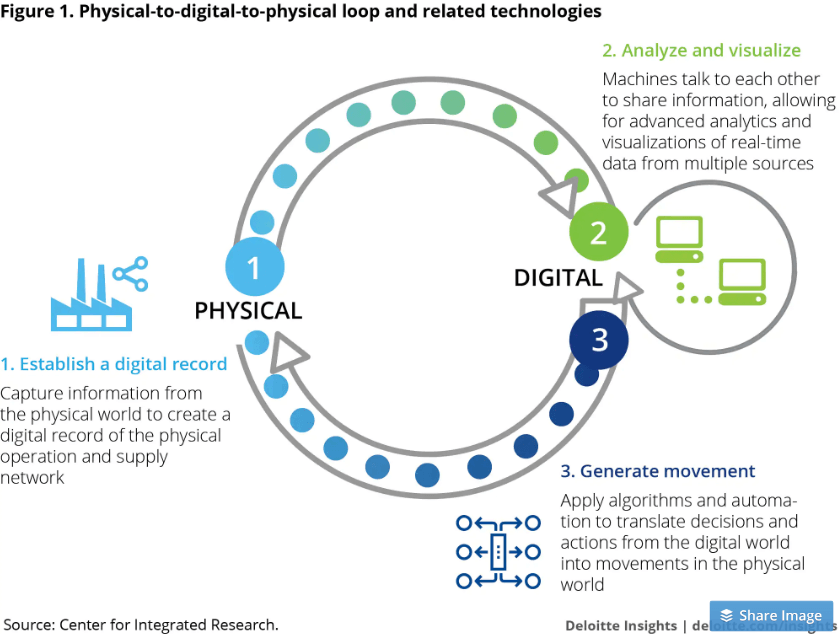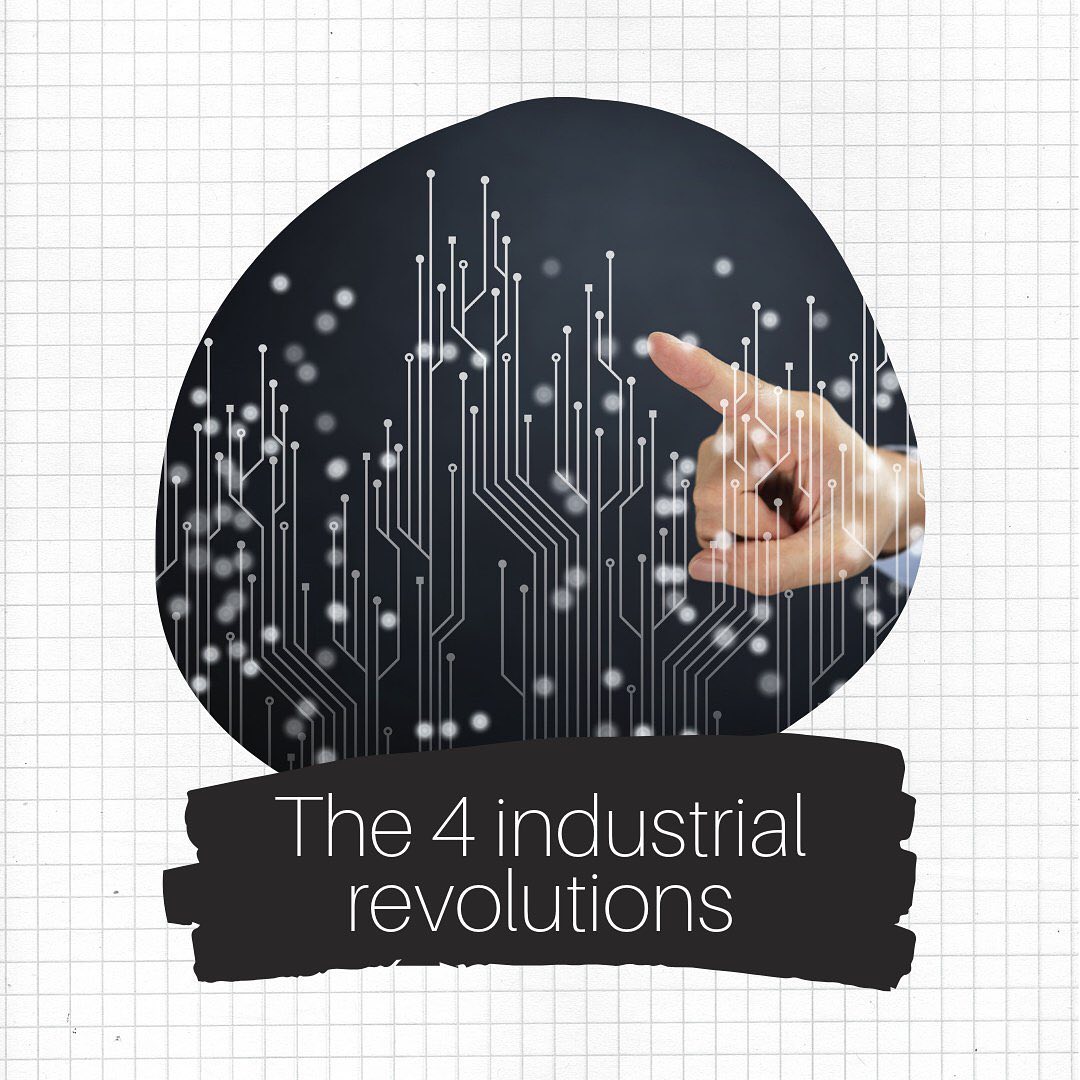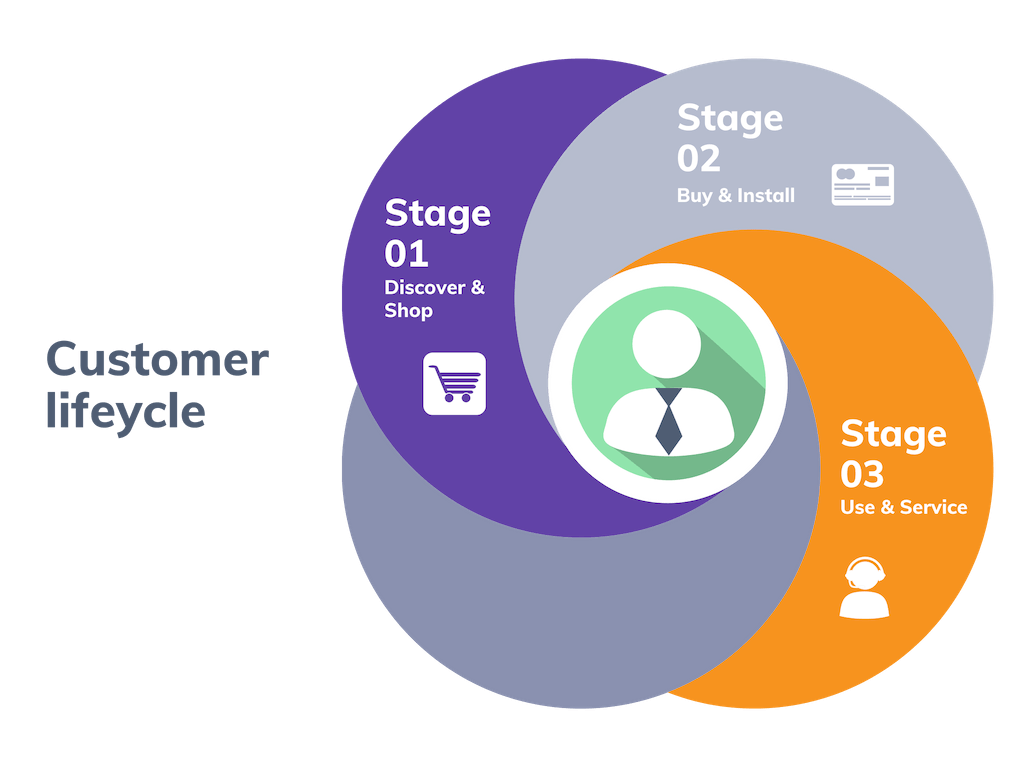Digital transformation integrates the technology within a business and aims to deliver more value to customers.
Industry 4.0 digitalizes the manufacturing process. It connects machinery with the web (i.e., Internet) and a business’s management systems, which helps augment and automate a company’s entire production.
Think of it as “smart” machines that can decide on their own. This too affects customer experience, although in a more indirect fashion – more about that later on.
The result of both is customer satisfaction but Industry 4.0 goes further to reach this outcome by connecting the customer with the business to the level of product creation and delivery.
Manufacturing is Not Just About Making Things Anymore
This point needs to be clear, to recognize how technology-driven manufacturing can genuinely help the customer.
Before, producers would make items, pass them to distributors, and share a percentage of the profits.
After Amazon, this process has transformed. Now, customers get a say on what they want to buy and how they want it delivered.
In the past, manufacturers never bothered with customer needs as this was the distributor’s and partner’s responsibility, but nowadays technology has made it possible for manufacturers to understand and interact with customers without the need of distributor interaction and feedback to make better products for the end-consumer.
Not everyone jumped on board the Industry 4.0 bandwagon as many businesses do things the old way.
However, more and more companies recognize the benefits of AI-enhanced technology-social media platforms, chatbots, and text-messaging systems to interact with customers in a more intimate manner.
Industry 4.0 Loop
One of the most intriguing aspects of what is being called The Fourth Industrial Revolution – Industry 4.0 – is the PDP or the physical-to-digital-to-physical loop.
This loop brings a 3-step integration of both physical and digital to take information from the physical – customers via manufacturers and then share it with machines for analysis after which intelligent algorithms apply to decipher the data and decide based on the analyzed information before sending those decisions back to the manufacturer.
To better illustrate this loop, look at the following diagram:
The digital technology that communicates, analyzes and generates a movement (i.e., algorithmic decision), helps produce customized products for the end-consumer.
This allows the company to make products more suited for the customers they serve without having to pay middlemen to deliver those products or capture customer information for them.
Industry 4.0 and Customer Experience
It doesn’t matter if an organization has a large or small manufacturing capacity, in today’s high-customer expectation world, businesses need to keep customers happy and loyal or they will take their money elsewhere.
The technology that has been spurring the current industry 4.0 revolution impacts every facet of the business, including:
- Sales & Operations
- Customer Support
- Customer Data Collection & Analysis
- Operational Organization
Technologies that are applicable to the areas just mentioned include:
- 3D Printing
- Internet of Things (IoT)
- Big Data
- Artificial Intelligence (AI)
- Smart Production Systems
Integrating Industry 4.0 technology within the business leads to measurable results:
- Engaged Consumers
- Improved Customer Lifecycle
- Customized Purchasing Experiences
- Empowered Employees
- Consumer-Optimized Production
- Consumer-Added Product Benefits
Industry 4.0 adds various advances to many business areas and technology connects production from the physical to the digital and back again.
Yet, the most interesting part of this connection is how it ties in the customer’s needs to the manufacturing, specifically in the areas of the customer lifecycle, sales & operations, customer data & support, and overall organization.
Industry 4.0 and The Customer Lifecycle
Why should a business’s manufacturing department care about customer lifecycle?
If a business wants to stay competitive, they must present customers with what they want and with manufacturing, this means better products.
The customer lifecycle offers many ways in which to better engage with consumers and get feedback. Pass that feedback to the manufacturing department’s PDP loop to produce customer-oriented products and benefits.
How to spot opportunities to engage with the customer? With technology.
Customer Lifecycle Actions
Businesses can take 5 actions to engage customers during their lifecycle.
Reach: Grabbing the target audience’s attention before they become a customer.
Acquisition: Attracting the target audience towards the business.
Conversion: Building a strong relationship with the gained audience to convert them into a customer.
Retention: Up-selling & cross-selling a customer to produce more sales, and providing a good shopping experience, including good delivery and communication with the customer.
Loyalty: Turning a customer into a “brand ambassador” by providing an ever-increasing customer experience.
While we break the standard definition of the customer lifecycle into five segments, Industry 4.0 achieves the result of the traditional model within three stages.
Stage #1: Discover & Shop (Reach, Acquisition, & Conversion)
Attracting a customer and gaining insights on the customer lifecycle can be done with eCommerce platforms.
Such platforms make conversions simpler and data analytics automatic.
Information collected at this stage, like buying intent & customer behavior, can help businesses better understand what their customers want and offer them more suitable recommendations, thus beginning the second stage of that customer’s lifecycle.
Stage #2: Buy & Install (Retention)
During this stage, a business can deliver real-time information to the manufacturing department or any partners and distributors the business may cooperate with.
Three major technologies help with that:
Relationship Management Platforms: Not only do these platforms help ease communications between manufacturers and partners but they also allow the manufacturer to “cloak” information that gives them an advantage over their competition.
GPS Technology: Besides helping to coordinate and optimize warehouse management and inventory supplies, GPS & other similar technologies also can send current delivery updates to the end-customer, keeping them notified of the status of their delivery at all times.
Predictive Analytics: technology can catch errors, defects, and other malfunctions before they reach the customer. That’s a must-have for providing a good customer experience.
The conversion is not over until the customer receives their product or service on time and in good condition.
The technology keeps everyone in-line and allows a smooth transition from the order page to the manufacturer to the distributor/partner to the customer.
This is the optimal approach to keep the customer for future sales!
Stage #3: Use & Service (Loyalty)
The customer experience does not start with the buy and end with the sale.
The third stage of the customer lifecycle is where the business gets to offer the customer more services and products to create unshakeable loyalty with their brand.
Industry 4.0 technology plays a big role in creating such loyalty by increasing customer interactions, providing them with updated products with added benefits for their specific needs, or services – sometimes free – to gain their trust and build brand confidence.
The best part is that digital technology works for both B2C & B2B businesses during this stage. Whether a customer is a person or a business, both need reinforcement to build confidence. The business can only know what they want and need through big data, AI, and software solutions that can predict future customer outcomes.
Industry 4.0 and Sales & Operations
Every department can exploit this technology if they learn to use it in the correct way – under the needs of their department.
This is especially true for Sales & Operations.
Technology & Sales
The sales department is a very important part of a business and often serves customers on an intimate level.
In fact, one can think of the sales department as not only the revenue-producing part of a business but also the brand ambassador of the company as it’s often the first interaction a customer has with the brand.
So, how can technology help the sales department and help them serve the customer?
Here’s how:
Audience Insights: Technology supports every stage of the customer lifecycle, including the first sale. If the sales department or the manufacturer understand what the customer wants during their shopping, they can give it to them right away with little manpower.
You can only do this through technology like AI, big data, eCommerce platforms, and similar customer data acquisition tech.
Industry 4.0 technology has made the sales process easy with tailor-made products fitting the customer’s behavior right on the company’s website or eCommerce platform.
Quality Leads: Before the customer becomes a customer, they must first become a lead.
With modern-day software, we can make swift, data-driven decisions. We can see if a visitor is a “good fit” for their product or not, which helps them make a correct decision of whether to follow or drop that lead.
Following up: After a lead has been qualified, a business’s sales team can automatically follow up.
Technology & Operational Efficiency
Up to this point, we discussed how technology can make various aspects of business more efficient to increase better customer experience.
We can say that Industry 4.0 is also a revolution in the operational efficiency of every department as they communicate and coordinate amongst one another.
How can technology bring such a vast benefit across the board?
Through:
Coordination Tools: technology can coordinate delivery between the manufacturer, distributor, and customer. These same tools can also integrate departments into one cohesive unit to better engage and deliver value to each other.
Tracking Performance: Technology allows an organization to watch its daily activities in real-time so that the work that needs to be done, gets done.
Aside from making sure that quotas are being met, tracking software also helps in spotting errors to correct them before they become a major problem.
Communication Software: The ability to communicate on a large scale and in real-time for little cost has been one of the greatest boons for humanity. It has kept people “connected” and opened access to unlimited information. It also fostered communities that would have never been formed otherwise.
Communication technology has had a great impact on business productivity and organization. No matter what department, project, or team, each company member can communicate with a keystroke or click of a mouse.
Industry 4.0 and Customer Data Integration, Analysis & Support
Technology can boost all areas of the business and coordinate efforts among departments, but let’s specify the value of customer data technology.
Customer Data Integration
The more a business compiles its customer data into a centralized & highly accessible format, the more it frees up the dependency to rely on other departments.
Also, many departments create forecasts of customer demands and don’t share their customer data among other departments and partners.
This can produce either a deficit in supply or a surplus as the interested departments did not know the higher or lower demand for the company’s product or service.
Centralized customer data coordinates customer behaviors in one location where all areas pull the information they need to keep up with current customer demands.
Customer Analysis
To analyze customer data is to know the customer!
Understanding customer data is just as important, if not more important as integrating into a centralized location.
Why?
If a business doesn’t understand which pieces of data to seek (i.e., which metrics are important), they can not take proper actions which will benefit their customers.
This applies to Big Data, where large amounts of information are collected and stored through autonomous technology.
While technology may seem to be the enemy in this case – pooling too much data for human consumption is a boon as it can give the information needed for more predictable customer experiences.
A business needs to do three things with customer data analytics:
Set Goals: What is the desired result of acquiring, accessing, and analyzing customer data? If you know this, it‘s easier to extract the metrics needed to achieve such goals.
Segment Data: Understanding that such massive amounts of customer data are not just for producing and delivering a sale but for providing better customer service after the sale and creating a longer lifetime customer value.
Segment the data you collect to include all areas of the customer lifecycle by relevant metrics about each stage.
Understand the Benefits: When overburdened with massive amounts of data, it will do business well to remember the various benefits of such data.
Benefits include predicting demand and supply cycles, better customer service & support, and the ability to cater to each customer on a more personal basis during each successive journey of their lifecycle, to name a few.
Remembering why data is being collected, segmented, and analyzed, keeps departments inspired to continue to sift through the data more to achieve the desired goal.
Customer Support
A business can not hold on to a customer just by selling a good product or service, it has to offer outstanding customer service & support to build a loyal customer base.
The problem is, traditional customer support methods like emails and forums will not cut it anymore – customers demand instant support!
Advanced customer support software can improve customer service by providing the following benefits:
- Gauging Support Metrics (new queries, resolved queries, response time, resolution time)
- Centralized Customer Queries (easy customer query tracking)
- Reduced Response Time (relevant automated responses)
- 24/7 Service & Support (bots are cheaper than people and can work round the clock)
- Smart Assignment (software allocates queries amongst agents so none of them become overburdened)
- In-Chat Lead Forms (customer software support captures and stores leads during live chats)
Improve customer support for better customer service by using the proper software.
Data Collection
We can’t ignore the legal concerns with data collection and storage.
Before 2016, there was little governance in customer data protection and distribution but with the General Data Protection Regulation (GDPR), this has changed.
The GDPR is a 2016 European Union privacy law that issues regulations & guidelines on data collection, processing, storage, distribution or exchange within EU member states.
GDPR Data Protection
The GDPR protects the following personal data of its EU citizens:
- Personal Identity: Name, Address, Email, ID Numbers
- Web Data: IP Address, Location, Cookies Data, RFID Tags
- Racial/Ethnic Data
- Health Data
- Sexual Orientation
- Political Opinions
GDPR Compliance
Who needs to follow GDPR guidelines & regulations?
Any person or business who has an EU customer base or collects stores, and exchanges customer data of any EU citizen must abide by their guidelines and regulations.
Final Word
Customers not only want more, they demand and command more!
Industry 4.0 encourages an organization to digitize its entire process, from product production to customer support.
The customer is influencing how the business works, even their purchasing behavior influences how a business creates and delivers a product.
Modern technology is the only way to keep employees and departments in constant dialogue with one another to assure good customer experience.
The Fourth Industrial Revolution has arrived and if a business wishes to stay in business during this era, they need to fulfill the increasing demands of today’s customers through digital transformation.




